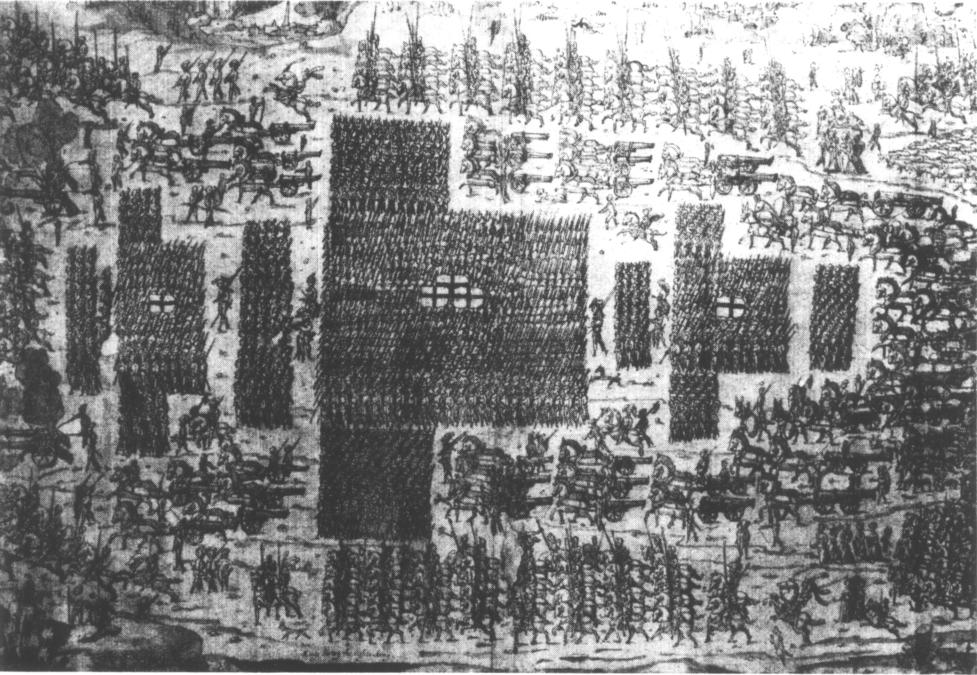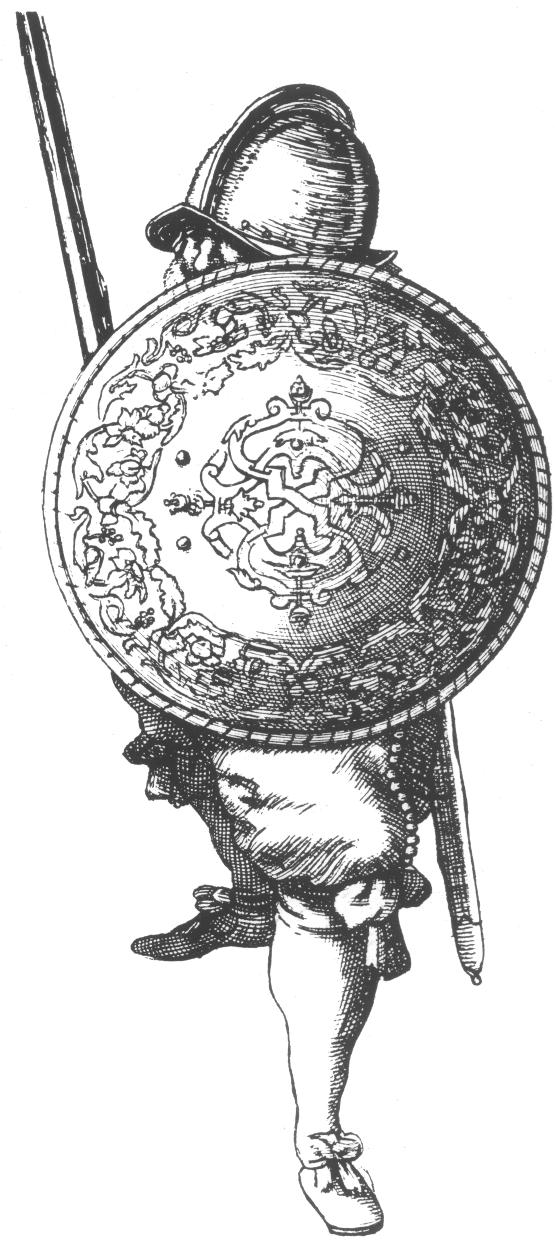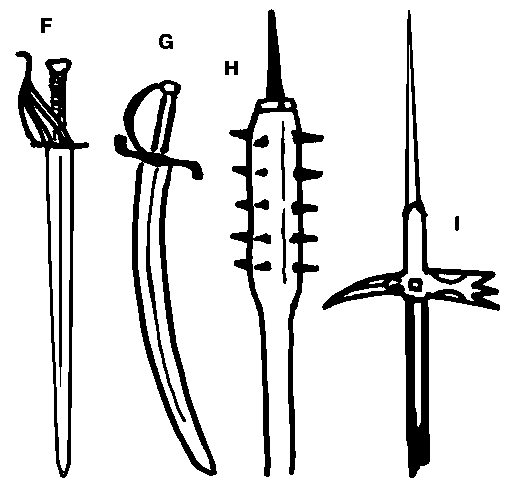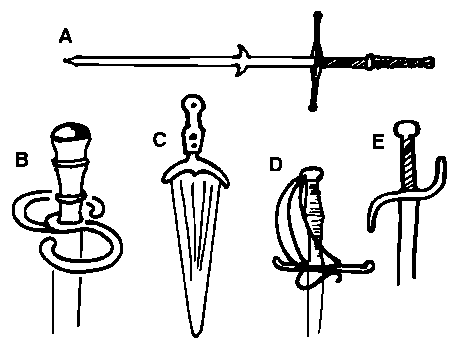
Try Amazon Fresh
Try Amazon Fresh Try Amazon Fresh |


 A Bill, mainly used by the English (Tower of London); two Bardische poleaxes from Eastern Europe (Tower of London); German infantry shield (see text) of the 1480s (Tower of London). |
 A 17th Century Targeteer showing the engraved surface of the round shield, by this time more ornamental than utilitarian. |

F a Venetian 'Schiavona' or Stradiot sword. G 'Shable' (sabre). A light cavalry sword copied from the Hungarians and Poles (both around 36 inches long). H ferocious in appearance but ineffective in comparison with, for example, a Bill, was the Morgenstern'. I another weapon which had practically disappeared by the mid-16th Century, the Lucerne hammer. | |

A two-handed sword. B Lansknecht sword-typical hilt and guard. C Cinquedea - a large dagger or short sword popular in Italy at the beginning of the 16th Century. D and E typical 16th Century sword hilts - 'E' often found on East European swords |
|
Previous: Part 1: Introduction by George Gush Next: Part 3: infantry missile weapons by George Gush Return to Contents of Renaissance Warfare by George Gush (Airfix Magazine Articles) |